 Asset Publisher
Asset Publisher
The State Forests National Forest Holding
The State Forests National Forest Holding is the largest organisation in the European Union managing forests, which belong to the State Treasury and celebrating its 90 anniversary this year.
Presently, we manage the area of one third of Poland's territory. Not long after the end of the Second World War, there was only 21 % of the area. Every year we plant 500 million of new trees, as we want Polish forests grow all the time.
Every year Polish foresters plant 500 million of trees.
85 % of nature reserves in Poland are located within the State Forests. 40 % of the forests managed by General Directorate of the State Forests are protected within the framework of European network Natura 2000. We fight against many threats: natural disasters, plaques of insects, trees' diseases, fires, pollutions, as well as poaching and vandalism.
We take care the forestry supplying the market with timber, as ecological and universal material, to be carried on in accordance with rules of balanced development (photography P.Fabjański).
One of our major tasks is making forests accessible to the society. We invite you to take advantage of these beautifully located within the forest wilderness holiday resorts, forester's lodges or guest rooms. That is for you, we create thousand kilometres of hiking trails, cycling paths or camping sites. All the above mentioned, you can find in service www.czaswlas.pl.
We also take care the forestry supplying the market with timber, as ecological and universal material, to be carried on in accordance with rules of balanced development. We obtain over 30 million of cubic meters of wood annually, twice as much as at the beginning of the nineties of the XX century.
Despite of this, the average of wood abundance per hectare of our forests is one fourth bigger than 20 years ago and 40% bigger than the average of European Union currently amounts.
In Poland in sectors connected with the forestry, there work about 375 thousand of people. It means that each 40 working Pole works in the forest.
In Poland in sectors connected with the forestry, there work about 375 thousand of people. It means that each 40 working Pole works in the forest. The sector of wood processing works out approximately 8 % of our GDP (Gross Domestic Product). Among others, thanks to the timber from the State Forests Poland is the 10 largest producer of furniture in the world, and the 4 largest furniture exporter.
The State Forests employ 25 thousand people. That way we are the 9 biggest employer in Poland. Among the largest companies in our country it takes 22 place in respect of its incomes and 11 place in respect of its profits. The value of assets, we manage, reaches 300 million zl. If we add social values, it will be worth one billion zlotych. We do not use money from the budget, but we earn money on our own to support the business. In spite of the financial crisis, since 2002, we continuously note down profits. Moreover, we pay taxes amounting 1,3 billion zl annually.
87 % of Poles think, the foresters are competent. We willingly share our knowledge of Polish forests, of their history and of nature values with the others. We publish books, periodicals, brochures; we also administer the website www.lasy.gov.pl . For children, the youth and teachers, we prepared internet service "E-lynx' Lynx Forest" (www.erys.pl). Our staff has supported schools in field of nature education for years. We also organise many actions to let people broaden their knowledge about forest, nature and ecology.
 Asset Publisher
Asset Publisher
 Asset Publisher
Asset Publisher
Jarząb brekinia wraca do polskich lasów
Jarząb brekinia wraca do polskich lasów
20 października b.r. pracownicy Nadleśnictwa Karnieszewice razem z przedstawicielami mediów (z uwagi na uwarunkowania epidemiczne było nas niewielka grupa) spotkali się w leśnictwie Koszalin w celu posadzenia sadzonek jarzębu brekinii i ogłoszenia okolicznym mieszkańcom, że to niezwykłe drzewo wraca do lasów i już niedługo będzie bardzo cennym elementem bioróżnorodności naszych drzewostanów.
Jarząb brekinia jest jednym z najrzadszych, bardzo osobliwych i jednocześnie pięknych drzew leśnych. Nazywany jest również brzękiem, jarzębiną klonową, bereką, czy wreszcie na Pomorzu gruszą klonową. Należy do rodzimych gatunków śródziemnomorskiego pochodzenia. Występuje w Europie, Azji Mniejszej, na Kaukazie i w północnej Afryce. W Polsce osiąga północno-wschodni zasięg. Najlepiej czuje się w miejscach nasłonecznionych, na żyznych siedliskach, w towarzystwie dębów, lip i grabów.
Drzewo to cenione było przez naszych przodków i wykorzystywane w medycynie ludowej, w wyrobach spożywczych, a z uwagi na swoje twarde, ciężkie ale elastyczne drewno również w meblarstwie i stolarstwie. Niestety użyteczność tego drzewa przyczyniła się do jego zniszczenia. W Polsce jest bardzo rzadki, umieszczony został na polskiej czerwonej liście w kategorii NT (bliski zagrożenia), objęty ochroną gatunkową na terenie całego kraju. Jest jednym z najmniej znanych rodzimych gatunków leśnych, a jednocześnie jedną z najcenniejszych polskich, dziko rosnących jarzębin osiągającym znaczne rozmiary pod względem wysokości (25-30 m) i grubości (ponad 1 m w obwodzie). Rosnąc w odosobnieniu, tworzy owalną, nisko osadzoną i silnie rozgałęzioną koronę, natomiast w zwarciu w lesie jest smukłym, gonnym drzewem. W maju kwitnie białymi kwiatami zebranymi w baldachogrona. Jesienią liście przebarwiają się na intensywnie czerwony lub malinowo - różowy kolor, a wierzchołki gałęzi obsypane są brązowymi, nakrapianymi owocami.
Pomimo wielu swoich zalet brekinia naturalnie występuje w Polsce na nielicznych stanowiskach. Znaleźli się jednak leśnicy – praktycy, których indywidualne inicjatywy przywrócenia tego gatunku naszym lasom znalazły finał w programach Regionalnych Dyrekcji Lasów Państwowych. W ramach programu realizowanego przez RDLP w Szczecinku na terenie Pomorza Środkowego posadzonych zostało 10 400 sztuk drzewek, a w Nadleśnictwie Karnieszewice 1 560 sztuk. Od dzisiaj kolejne 100 sztuk będzie rosło w koszalińskim lesie.
Prowadzone z powodzeniem przez Lasy Państwowe nasadzenia tego cennego gatunku dają mu duże szanse na stały powrót do polskich lasów.
Małgorzata Rokicka - Nadleśnictwo Karnieszewice


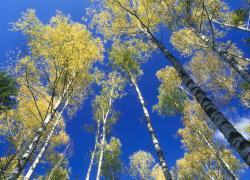 fot. Paweł Fabijański
fot. Paweł Fabijański
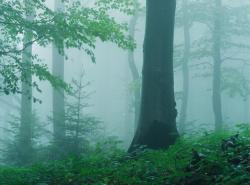 fot. Paweł Fabijański
fot. Paweł Fabijański
 fot. Paweł Fabijański
fot. Paweł Fabijański
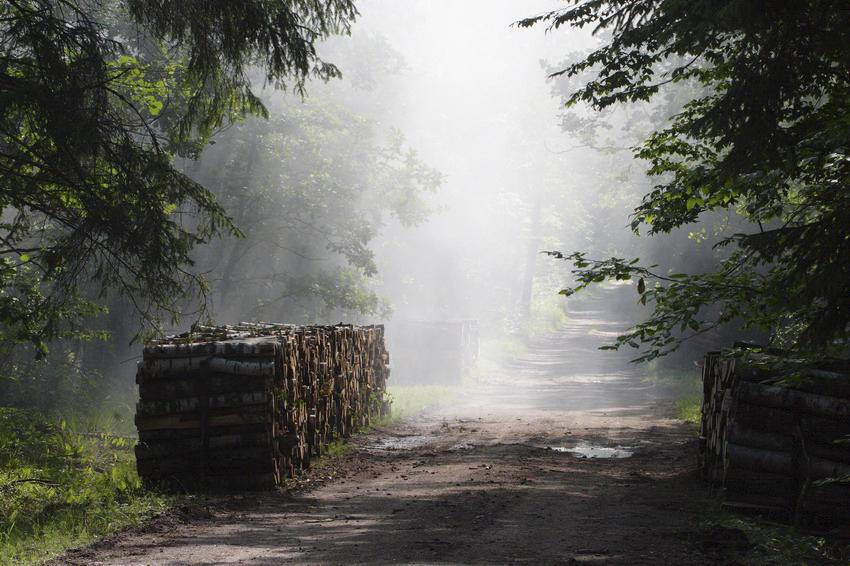





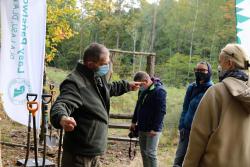 Nadleśniczy w rozmowie z uczestnikami wydarzenia
Nadleśniczy w rozmowie z uczestnikami wydarzenia
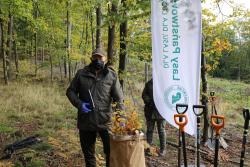 Prezentacja sadzonek
Prezentacja sadzonek
 Liście jarzębu z bliska
Liście jarzębu z bliska